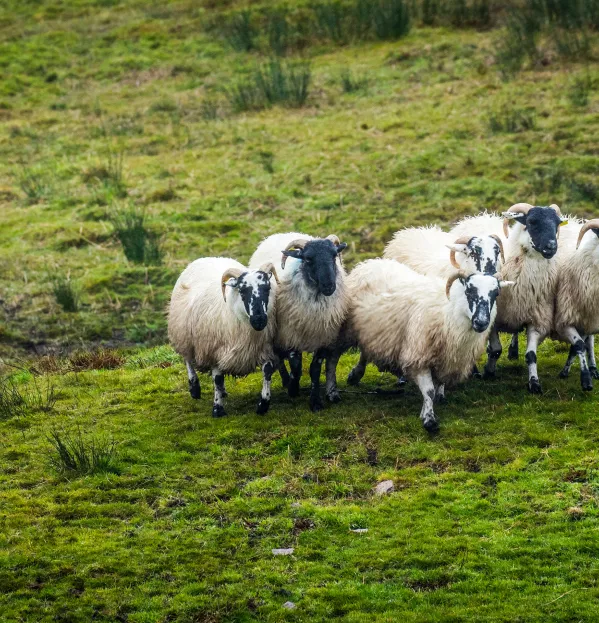- Home
- Teaching & Learning
- Secondary
- How to get transition between lessons right
How to get transition between lessons right

Do you care how students move from lesson to lesson?
You should. When the transition between lessons isn’t right, behaviour and learning suffer.
In a secondary school with a six-period day and tutor time, students move between lessons a minimum of four times. These changeovers are often memorable for all the wrong reasons.
When corridors are chaotic and have little supervision, fights and bullying are more likely to occur. Over time, this erodes a school’s culture, even where it is normal to behave excellently.
Students need to arrive to lessons calmly, positively and ready to learn so teachers can teach excellent lessons.
Coupled with the disruption of the pandemic, at my school we knew that if we weren’t proactive about orderly transition, we could experience multiple cases of poor behaviour.
When looking at how to tackle this, our site made it tough to find a solution that worked: we have large, sprawling buildings, which makes supervision challenging. We knew we needed a blend of staff presence and student self-regulation to solve the problem.
The value of transition
The first thing we did was teach students explicitly why it is important to behave between lessons and we also modelled what great behaviour looks like.
I presented the rationale for improving transition through the concept of marginal gains in assembly. I told the story of Eliud Kipchoge, an Olympic runner who identified all the factors that were slowing him down and preventing him from breaking the two-hour marathon barrier. He tackled seemingly insignificant margins and achieved his goal.
I explained that we should see lesson transition in the same way: the smoother the start to our next lesson, the more we can maximise these marginal gains.
Students were encouraged to think hard and reflect on their behaviour. In an assembly two weeks later, I revisited transitions to update students on progress and reinforce the importance of transition through the concept of collective responsibility: we all benefit from improved transitions.
More of these assemblies followed, layering concepts on top of each other, as you would in an academic curriculum. Over time, the following rules were introduced, with a clear rationale for students:
- Students will be dismissed by their teacher row by row.
- Students should not pack away their planner or pencil case but walk with this in hand to save time at the beginning of their next lesson.
- Two bells will ring, five minutes apart, and students must arrive by the second bell (preferably earlier) to avoid a 30-minute detention.
- When in corridors, students must walk on the left to allow others coming in the opposite direction to pass.
- Between transition, students should greet teachers and their peers to create a positive atmosphere and build strong professional relationships. They were told that if this was consistently noted, they might receive merits.
- Once students enter the classroom, they must immediately settle and complete their first task.
More teaching and learning:
- Michael Young: What we’ve got wrong about knowledge and curriculum
- Readability: a measure teachers should handle with care
- Does the weather affect students’ behaviour?
Holding students to account
Once we had established the rules, we increased staff presence to make sure they were abided by.
Teachers now stand on the threshold of their classroom so they can see both corridor and classroom. This allows them to dismiss students row by row, manage corridor behaviour and greet students entering their classroom and passing in the corridor. Staff are supported in establishing the expectation that students should take responsibility to settle and work as soon as they arrive.
At the beginning, we modelled to staff how to hold students to account, and gave them the following examples, so it became the norm.
Teacher: “Good morning, Yunis. How are you this morning?”
Yunis: *mumbled response*
Teacher: “Right, stop Yunis. Let’s try that again. Remember, we are a school where we are ‘obviously kind’ to each other. If I respect you, I expect you to respect me back. And if you do this, you will have better relationships with everyone and get in less trouble.”
Yunis: “I am good, thank you, Sir. How are you?”
Teacher: “Yes, I’m great, thank you for asking. Have a wonderful day, Yunis. Work hard.”
When things went wrong, we supported staff and encouraged them to use sanctions such as detentions for “poor transition” and longer detentions for rudeness or physical contact. We modelled examples of how to always show courtesy and politeness, even when issuing sanctions for rudeness.
Teacher: “Good morning, Amelia. How are you this morning?”
Amelia: “I am good, Sir, you OK?”
Teacher: “Yes, I am great, Amelia. Can you please do your top button up?”
Amelia: (shouting) “You’re not checking anyone else, are you?”
Teacher: “OK, Amelia, I am being very polite to you. Can you please be polite to me? Remember, Mr Everett spoke about ‘genuine mutual respect’ with you on Thursday?”
Over time, this has led to the strengthening of relationships between students and staff, safer corridors, and a warm and supportive atmosphere.
Transitions are now an opportunity to interact positively with students and support other teachers by ensuring students enter their classroom focused and ready to learn.
Louis Everett is a vice-principal in an inner-city school
You need a Tes subscription to read this article
Subscribe now to read this article and get other subscriber-only content:
- Unlimited access to all Tes magazine content
- Exclusive subscriber-only stories
- Award-winning email newsletters
Already a subscriber? Log in
You need a subscription to read this article
Subscribe now to read this article and get other subscriber-only content, including:
- Unlimited access to all Tes magazine content
- Exclusive subscriber-only stories
- Award-winning email newsletters
topics in this article



